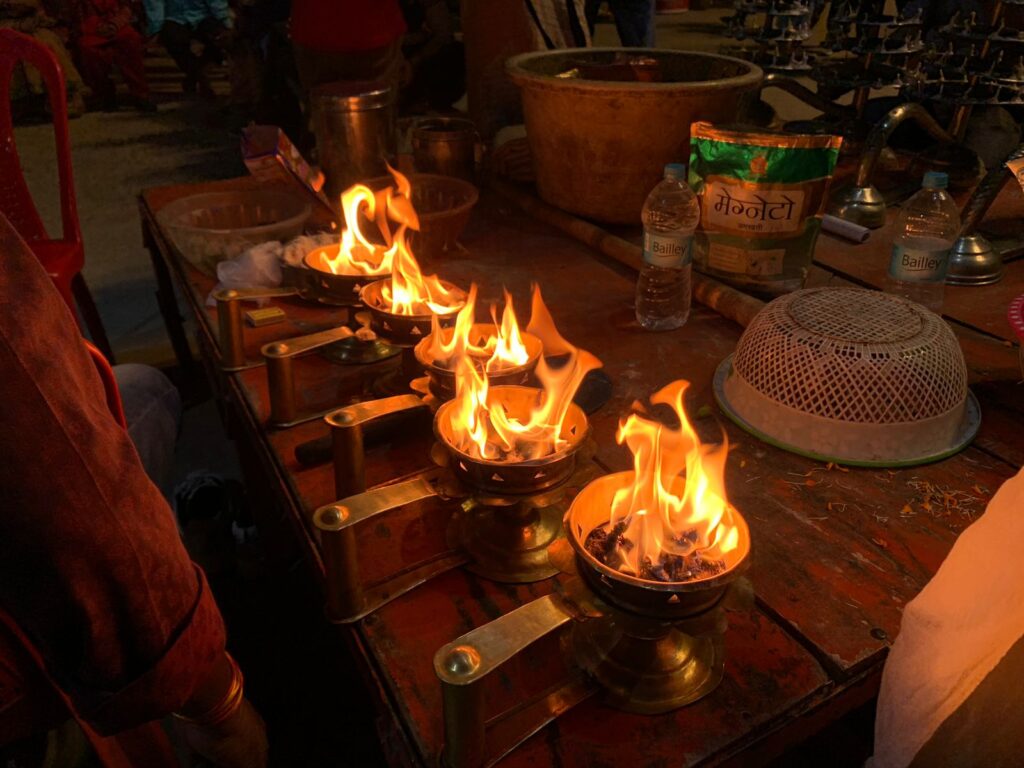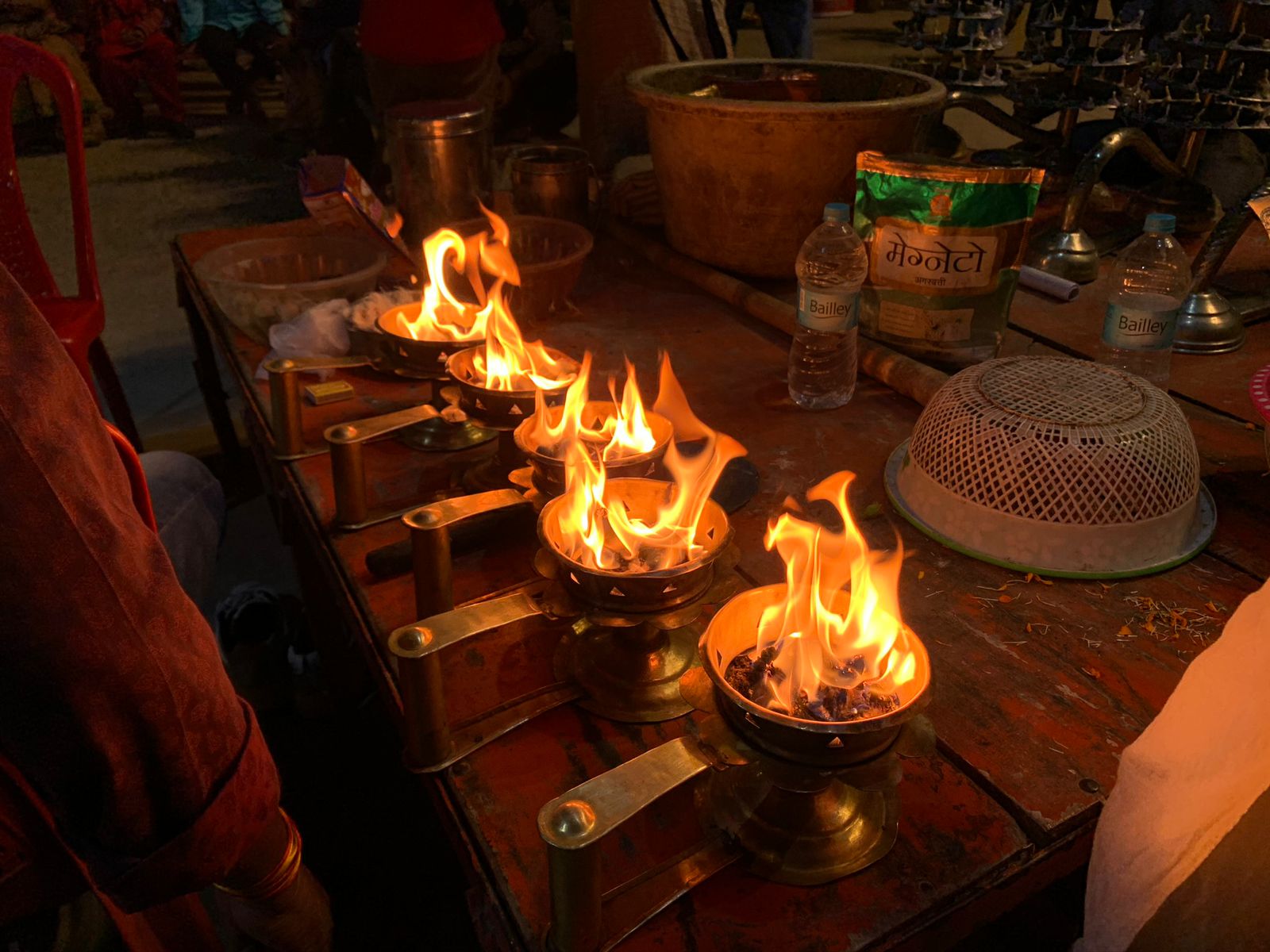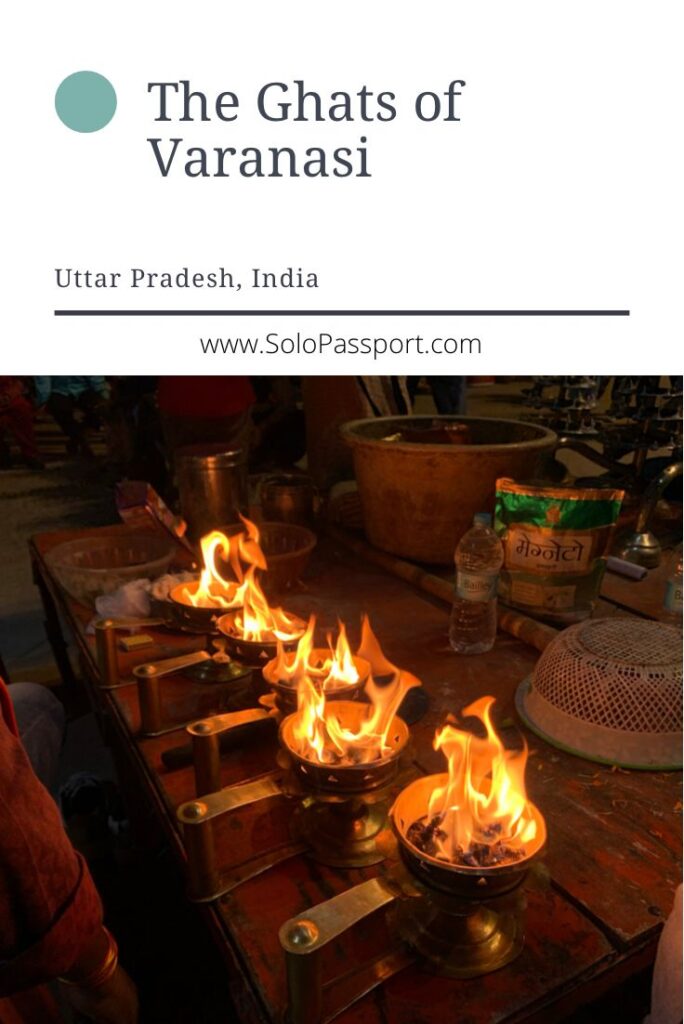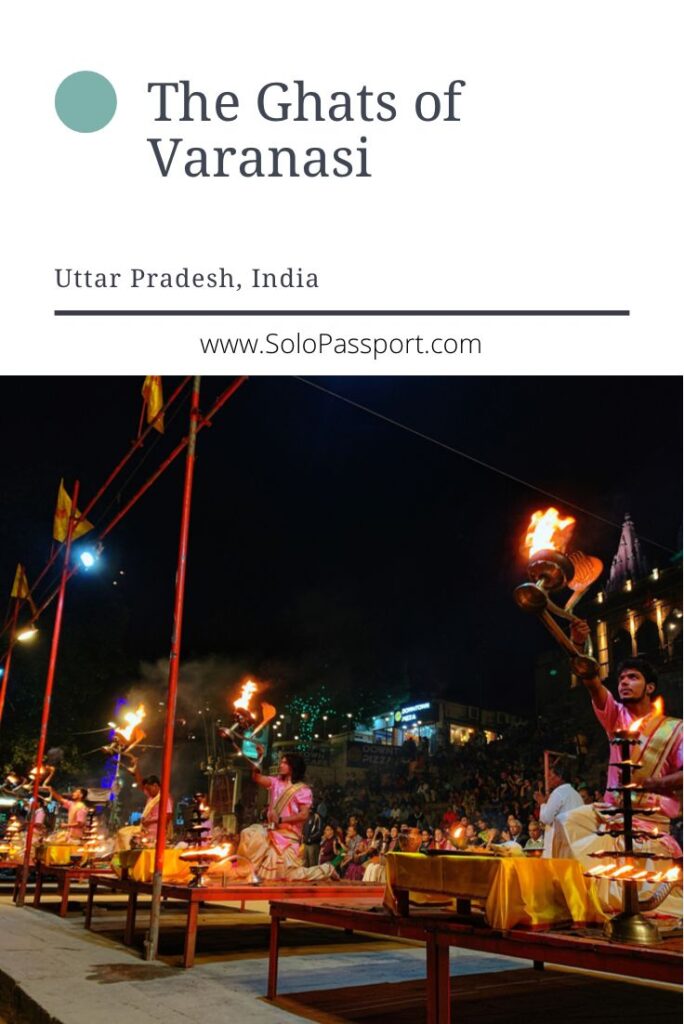6 Ghats of Varanasi (2024)
Discover the spiritual heart of India with a visit to the Ghats of Varanasi. Immerse yourself in the ancient rituals, vibrant culture, and mesmerizing sights along the sacred Ganges River. Experience the spiritual ambience as you witness devout pilgrims perform rituals, holy ceremonies, and traditional practices.
Varanasi is renowned for its many ghats, infusing the city with character and vibrancy. Serving as sites for religious worship ceremonies known as puja, each ghat is steeped in its religious narrative. Reconstructed in the 18th century with support from the Maratha rulers, these ghats offer a glimpse into Varanasi’s rich history and cultural heritage.
Exploring a selection, if not all, of these ghats is a must-do experience for anyone visiting Varanasi. A ghat constitutes a series of steps descending towards a river, encapsulating the essence of Varanasi’s spiritual and architectural charm.
Page Contents
PIN for later reference – Ghats of Varanasi
This article may contain affiliate links, meaning if you decide to purchase via my links, I may earn a commission at no additional cost to you. For complete information, please see our affiliate disclaimer here.
Disclaimers:
- The prices mentioned in the post are valid only at the time of publication. Ensure that you check the booking websites for up-to-date information and prices.
- My opinions and views are unbiased. If the post is a collaboration, then they are specifically mentioned.
- Ensure that you check the relevant websites for up-to-date information on COVID protocols.
- For any adventurous activities, please note that there is a risk that can be dangerous. Ensure you read the terms and conditions recommended by individual agencies and do them at your own risk.
- For visas, it is best to see the embassy website for changing rules.
- While using the recommended guides, auto-drivers or taxi drivers, do your due diligence and trust your judgement.
Ganga Aarti at the Ghats
One of the most breathtaking experiences in Varanasi is witnessing the Ganga Aarti at the ghats. Enchanting chants characterize this grand celebration and create an awe-inspiring ambience. Numerous priests partake in the puja, venerating the sacred River Ganga by gracefully moving deepas (lamps) to the rhythmic tunes of bhajans. The ceremony typically commences at 6 PM in winter and 7 PM in summer, lasting approximately 45 minutes. Best of all, attending the Ganga Aarti is free of charge.
You have various options to witness the mesmerizing Ganga Aarti. One is from the steps of the ghat itself, which is a complimentary experience. Alternatively, you can opt for a boat ride on the river, which comes at a cost. Each perspective offers a distinct view of the Ganga Aarti, and I highly recommend experiencing both during your visit to Varanasi.
6 Ghats of Varanasi
Varanasi boasts approximately 88 ghats, with only a select few holding significant fame and importance. While most of these ghats are dedicated to religious puja ceremonies, two standout exceptions are the Manikarnika and Harishchandra Ghats, which serve as solemn cremation sites.
Assi Ghat
Assi Ghat is Varanasi’s southernmost and one of its largest ghats, steeped in local lore and Hindu belief. According to tradition, it is where the revered Hindu saint and poet Tulsidas departed for his heavenly abode. Tulsidas, known for his devotion to Lord Rama, spent much of his life in Varanasi and Ayodhya.
For those seeking a serene experience of the Ganga Aarti, Assi Ghat offers a tranquil alternative to the bustling crowds found at other ghats. The Aarti commences at 6 PM, allowing visitors to secure a prime viewing spot by arriving earlier. With fewer attendees, securing a chair close to the Aarti becomes a comfortable possibility at Assi Ghat.
Manikarnika Ghat
Manikarnika Ghat holds a solemn place in Varanasi as one of the two ghats designated for cremation ceremonies. According to Hindu belief, cremating a body at this ghat enables the soul to achieve moksha, liberation from the cycle of birth and death. Numerous Hindu mythological narratives are interwoven with the essence of Manikarnika Ghat.
One such legend recounts the sacrifice of Goddess Sati, who immolated herself after the humiliation of her husband, Lord Shiva, by Daksha Prajapati. In grief, Lord Shiva performed the Tandava dance with her burning body, prompting Lord Vishnu to intervene by dismembering Sati’s body with his Sudarshana Chakra. The parts fell to Earth, marking a sacred site known as Ekannya Shaktipeethas. At Manikarnika Ghat, it is believed that Sati’s earring descended.
In another tale, Lord Vishnu undertook millennia of penance to pray Lord Shiva, convincing him to spare Varanasi from destruction during the cosmic dissolution. As a token of gratitude, Lord Vishnu dug a well (kund) on the Ganga’s banks for Lord Shiva and Goddess Parvati to bathe. It is said that Lord Shiva’s earring, or “Manikarnika,” slipped into this well, thus lending the ghat its name.
A third story tells of a jewel falling from Lord Shiva’s ear during a furious dance, embedding itself in the earth at this sacred site. Each narrative adds significance to Manikarnika Ghat, where spirituality and myth converge in solemn reverence.
Dashashwamedh Ghat
Dashashwamedh Ghat is Varanasi’s principal ghat, near the revered Vishwanath Temple. Initially constructed in 1748 by Peshwa Balaji Baji Rao, it underwent reconstruction in 1774 under the patronage of Ahilyabahi Holkar. Steeped in Hindu mythology, Dashashwamedh Ghat is linked to two significant legends.
According to one tale, Lord Brahma established the ghat to welcome Lord Shiva. Another legend recounts Lord Brahma’s sacrificial offering of ten horses during the Dasa Ashwamedha yajna at this ghat. Locals also believe that Dashrath performed the Ashwamedha ritual ten times at this sacred site.

Kedar Ghat
Following Dashashwamedh Ghat, Kedar Ghat is the second busiest ghat in Varanasi. This bustling waterfront area is renowned for housing the Kedareshwar Temple, devoted to Lord Shiva, and the tranquil Gauri Kund pond.
Opting for a boat excursion from Kedar Ghat presents an excellent opportunity to witness the famed Ganga Aarti at Dashashwamedh Ghat. This scenic boat ride encompasses a tour of the Panch Ghats, along with the enchanting Aarti ceremony. For a private boat, exclusively yours without sharing, the cost is INR 1800.
Harishchandra Ghat
Harishchandra Ghat, the counterpart to Manikarnika Ghat, serves as another sacred space for cremation rituals. This ghat derives its name from the legendary king Harishchandra, whose tale is deeply intertwined with its lore. According to myth, King Harishchandra toiled at the ghat, seeking truth and clarity in his life.
Legend has it that one day, the revered sage Rishi Vishwamitra approached the king, requesting the ritual fee known as Rajsuya Dakshina. Renowned for his boundless generosity, the king relinquished all his possessions, including wealth and kingdom, to meet the sage’s demands. However unsatisfied, the sage demanded further payment. Feeling utterly helpless, King Harishchandra sold his own family into slavery and surrendered himself to servitude.
The king’s resolve faced its ultimate test when his wife, bearing their deceased son who had succumbed to a snake bite, arrived at the cremation ground. Despite immense hardship and sorrow, King Harishchandra demonstrated unwavering strength and honesty. His steadfast dedication impressed him; the gods bestowed upon him his lost throne and kingdom and even restored his deceased son to life.
Harishchandra Ghat is a testament to the king’s unyielding integrity and fortitude, immortalizing his legacy of resilience and virtue for future generations.
Panchganga Ghat
Panchganga Ghat symbolizes the confluence of five sacred rivers: the Ganga, Yamuna, Saraswati, Kirana, and Dhupapapa. This convergence holds immense spiritual significance for Hindus. Moreover, the ghat serves as a testament to the peaceful coexistence of Hindus and Muslims, exemplifying harmony and unity. Adjacent to the ghat stands the Alamgir Mosque, also known as Madhav-ka Dera, underscoring the shared reverence for diverse religious beliefs in this sacred space.
Closing Notes
Exploring the ghats of Varanasi undoubtedly offers a unique and unforgettable experience. The atmosphere is charged with energy, emotions, celebrations, and a chaotic charm that captivates all who visit. I strongly suggest dedicating a few hours, if not days, to immerse yourself in the ambience of these ghats. Additionally, numerous cafes offer breathtaking views of the riverbanks, further enhancing the experience.
I’m curious to know which of these ghats you’ve had the opportunity to visit. Feel free to share your experiences by writing to me at Solopassport@gmail.com.
How can you support me?
You know how much I love coffee, so you can buy me a coffee – Buy me Coffee!
Or you can purchase from one of the below travel resources without any extra charge to you:
Travel Resources
Book your flight on Skyscanner.com or Trip.com
Reserve your accommodation on Stay22
Reserve your stay at a hostel on HostelWorld
Use RentalCars or DiscoverCars for hiring self-driven cars
Book your tours and travels or purchase tickets on Viator or GetYourGuide
For a universal SIM card, use DrimSim
Buy comprehensive travel insurance on SafetyWing and WorldNomads
If you liked this article and if it was helpful in your planning or travelling, do share, tweet, or pin this post.
Follow me on Instagram | Facebook | YouTube | Twitter | LinkedIn
Do you have a question? Do you want any suggestions and tips for travel, hikes, and scuba dives? Use the Subscription box below to sign up and get updates by email.





